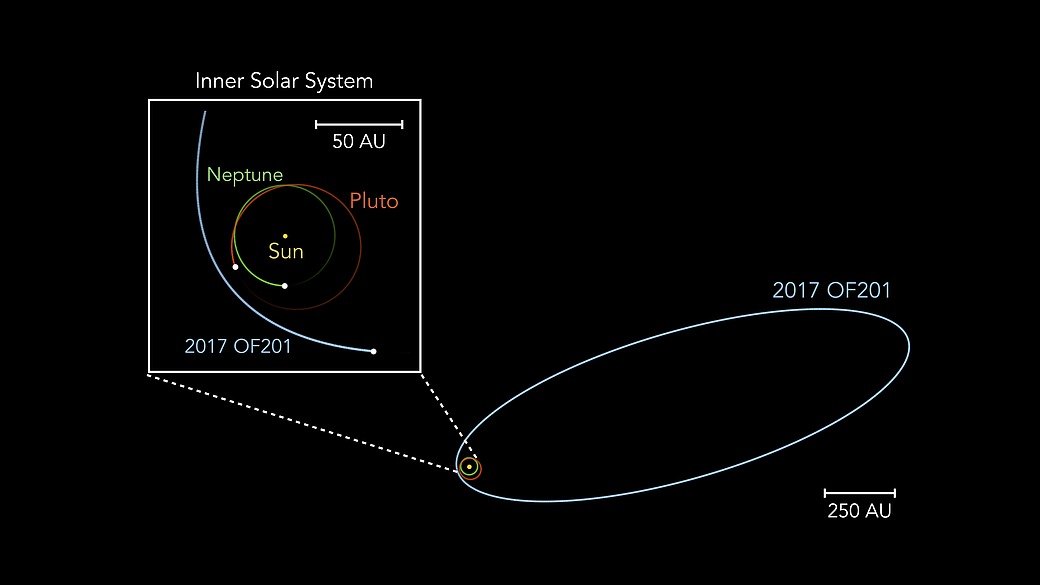The Solar System has just gotten a new official member. Currently, with the name of 2017 OF201, this is a trans-Neptunian object (TNO). This means that it orbits the Sun further away than Neptune. Actually, its orbit is so big that it takes about 25,000 years to complete.
The discovery of the object was officially announced on May 21, 2025, by the International Astronomical Union’s Minor Planet Center. It is estimated to have a diameter of about 700 kilometers (435 miles), big enough for this to be a dwarf planet.
“2017 OF201 spends only 1 percent of its orbital time close enough to us to be detectable. The presence of this single object suggests that there could be another hundred or so other objects with similar orbit and size; they are just too far away to be detectable now,” discovery team leader Sihao Cheng from the Institute for Advanced Study said in a statement.
“Even though advances in telescopes have enabled us to explore distant parts of the universe, there is still a great deal to discover about our own Solar System.”
One percent is a small number, and it indicates just how big this TNO’s orbit is. With a diameter a third of Pluto’s, it is incredible that it has been spotted.

Image showing the current location of Pluto, Neptune, and 2017 OF201.
Image Credit: Jiaxuan Li and Sihao Cheng
“The object’s aphelion – the farthest point on the orbit from the Sun – is more than 1,600 times that of the Earth’s orbit,” explained Cheng. “Meanwhile, its perihelion – the closest point on its orbit to the Sun – is 44.5 times that of the Earth’s orbit, similar to Pluto’s orbit.”
The discovery of this object will certainly cause issues in the hunt for Planet 9 – a hypothetical planet larger than Earth – expected to exist far beyond the orbit of Pluto. The idea of a planet has been suggested because the orbit of many other TNOs seems to be organized in a specific way.
“Many extreme TNOs have orbits that appear to cluster in specific orientations, but 2017 OF201 deviates from this,” explained co-discoverer Jiaxuan Li from Princeton University.
Certainly a spanner in the works for the Planet 9 hypothesis. If more objects like 2017 OF201 are found, it might all come crashing down – and it might not be too difficult. The observations that made this discovery possible came from archival data. More TNOs and dwarf planets might be hiding in them.
“All the data we used to identify and characterize this object are archival data that are available to anyone, not only professional astronomers,” explained Li. “This means that groundbreaking discoveries aren’t limited to those with access to the world’s largest telescopes. Any researcher, student, or even citizen scientist with the right tools and knowledge could have made this discovery, highlighting the value of sharing scientific resources.”
A paper describing the discovery is available at arXiv.
Source Link: Newest Member Of The Solar System Just Announced – And It’s In An Extreme Orbit